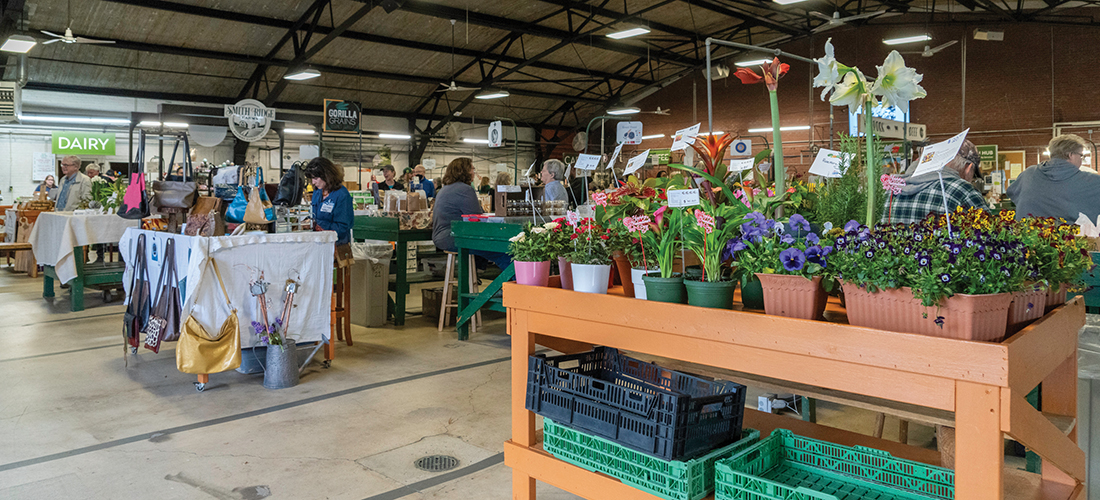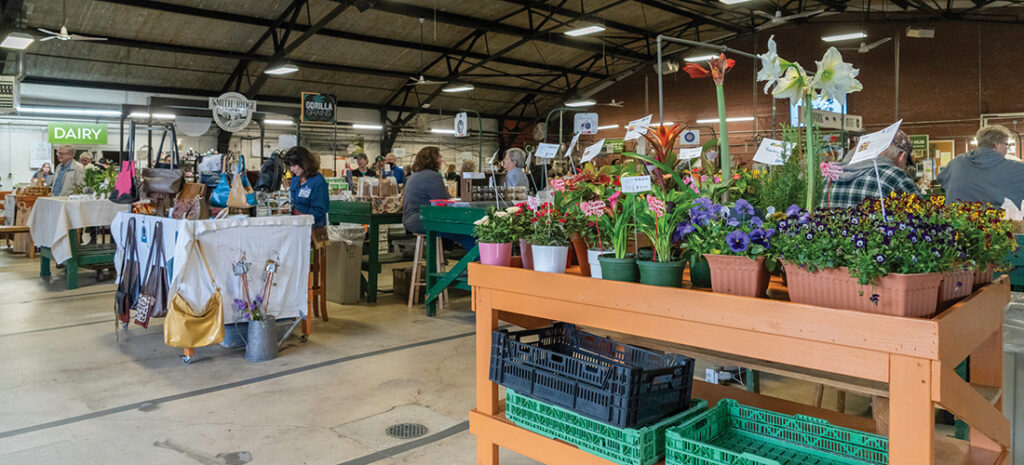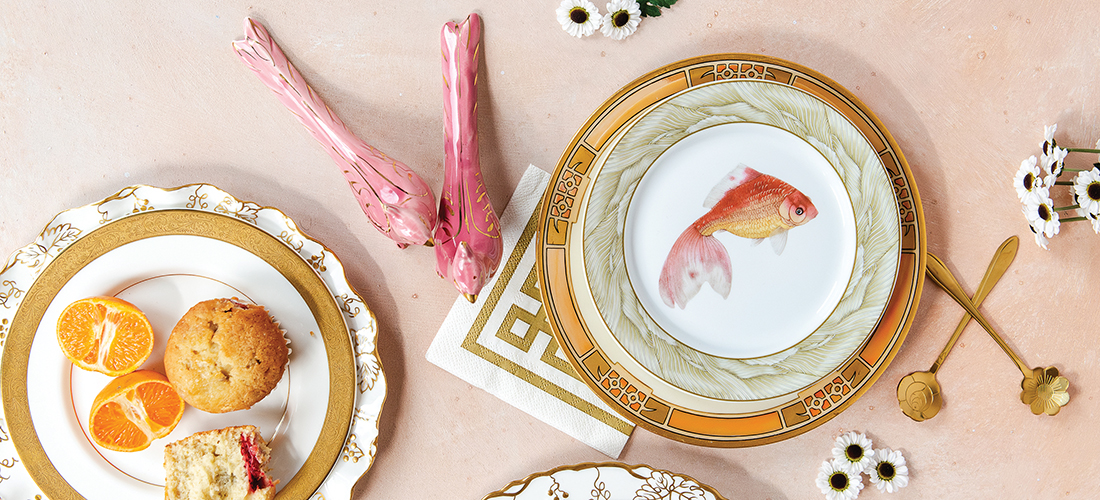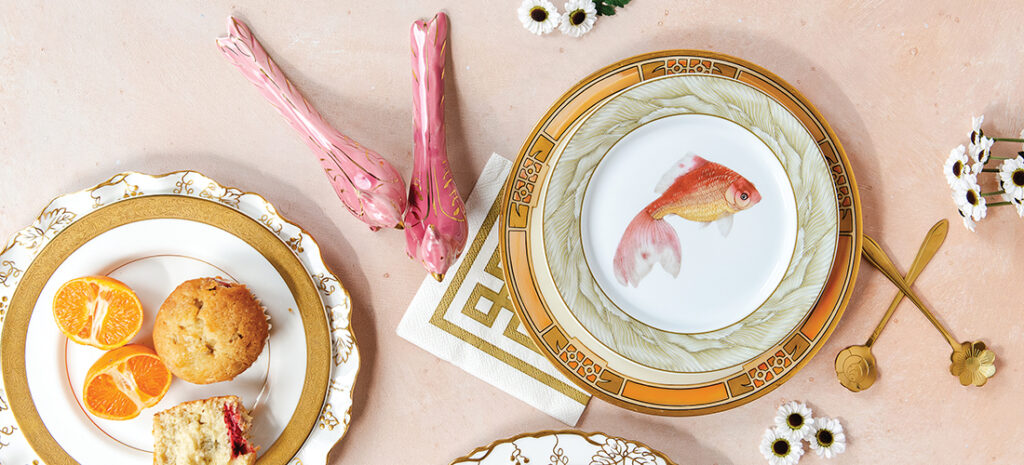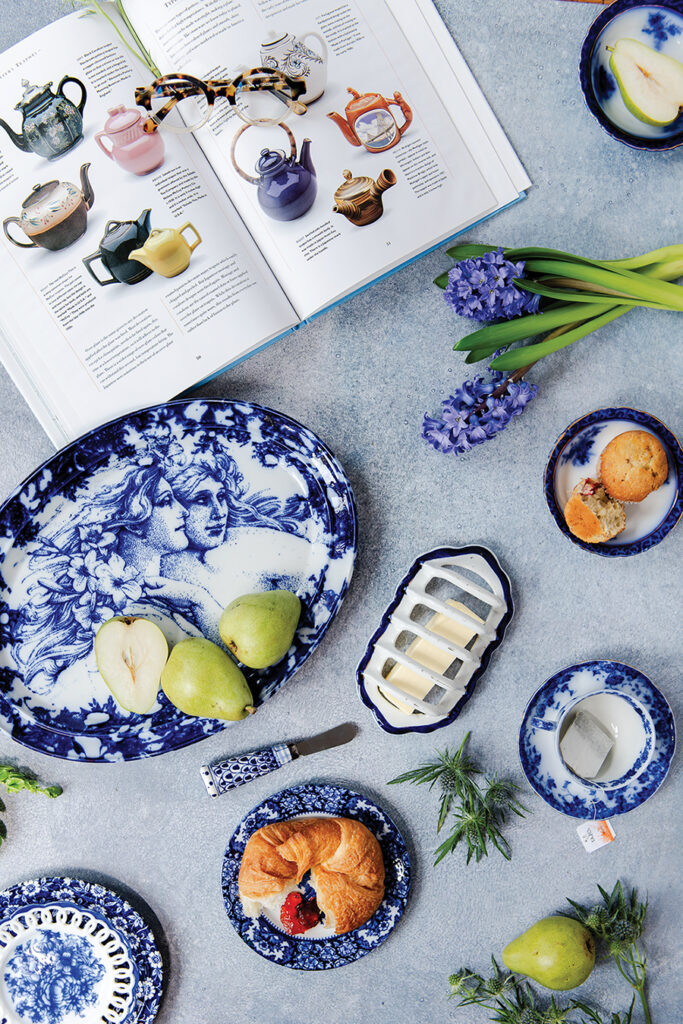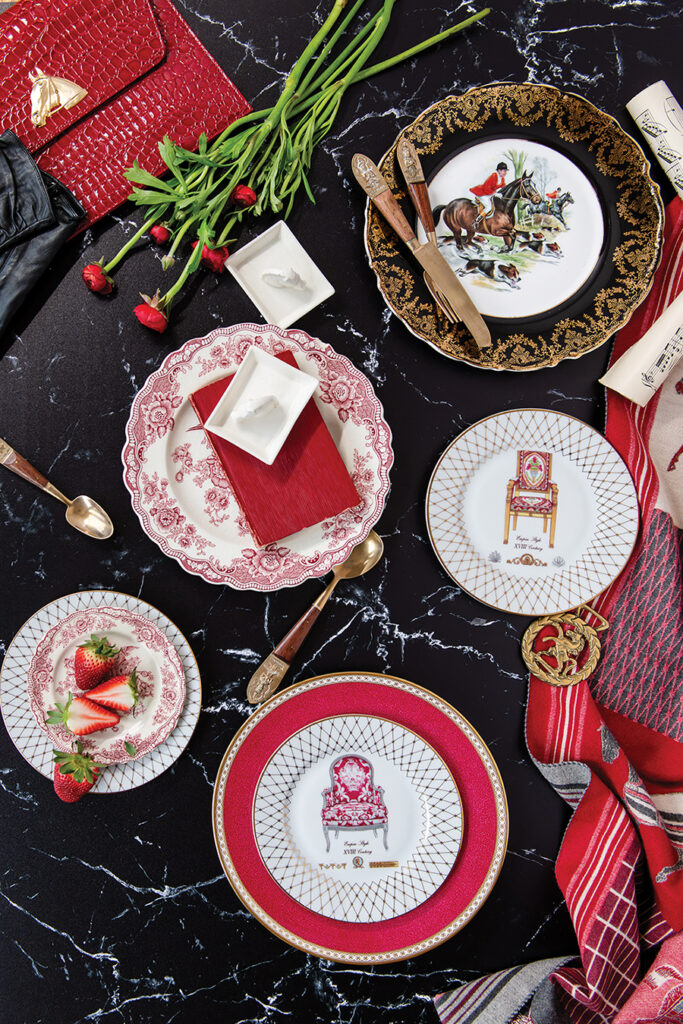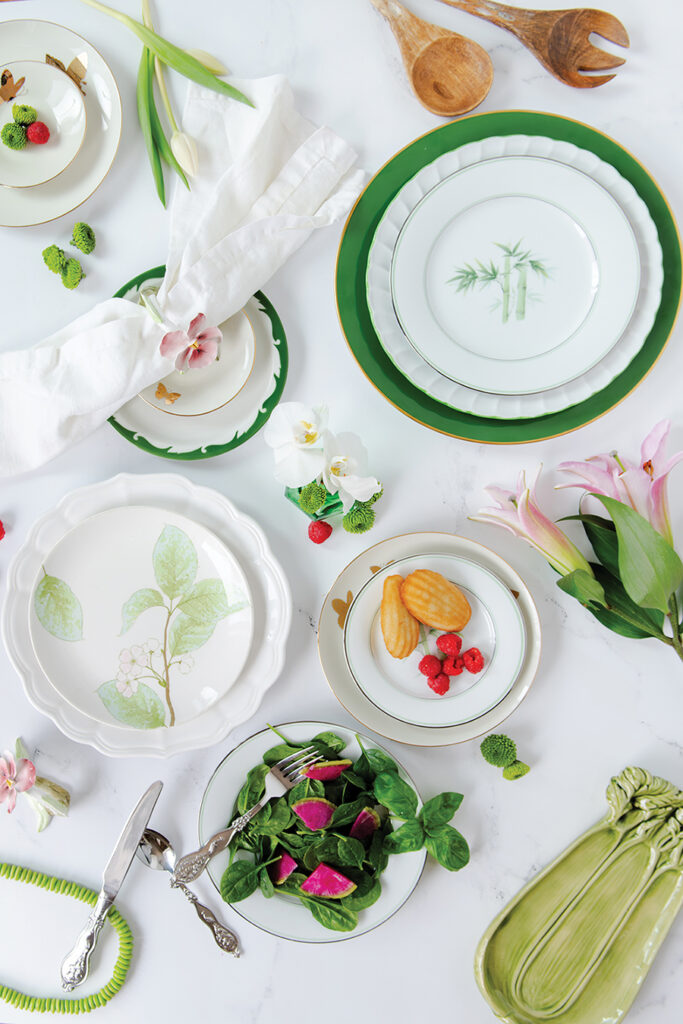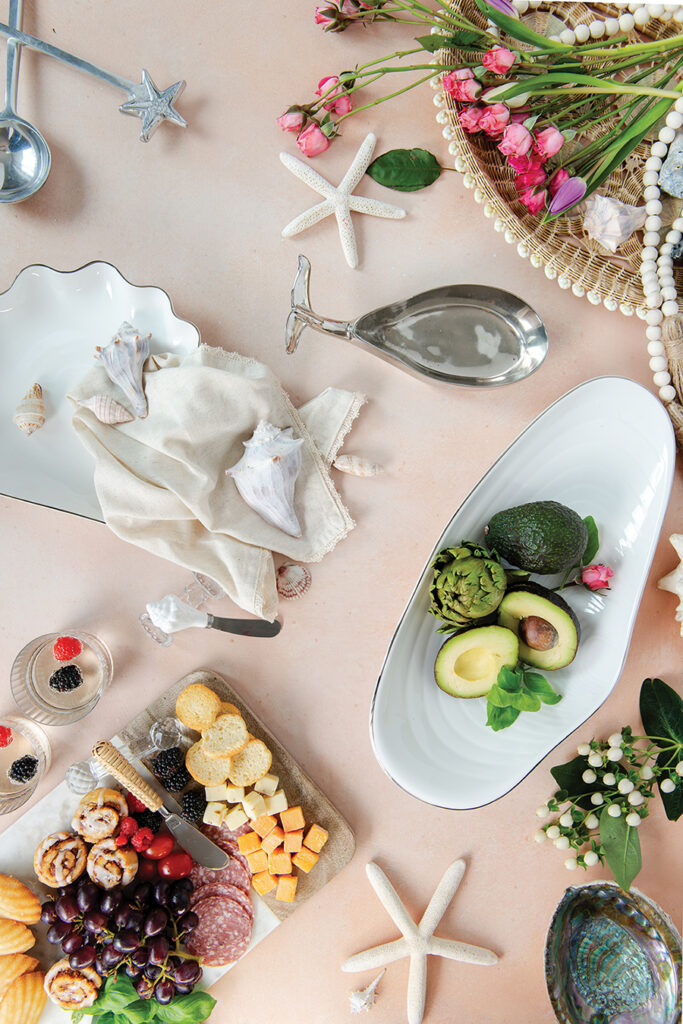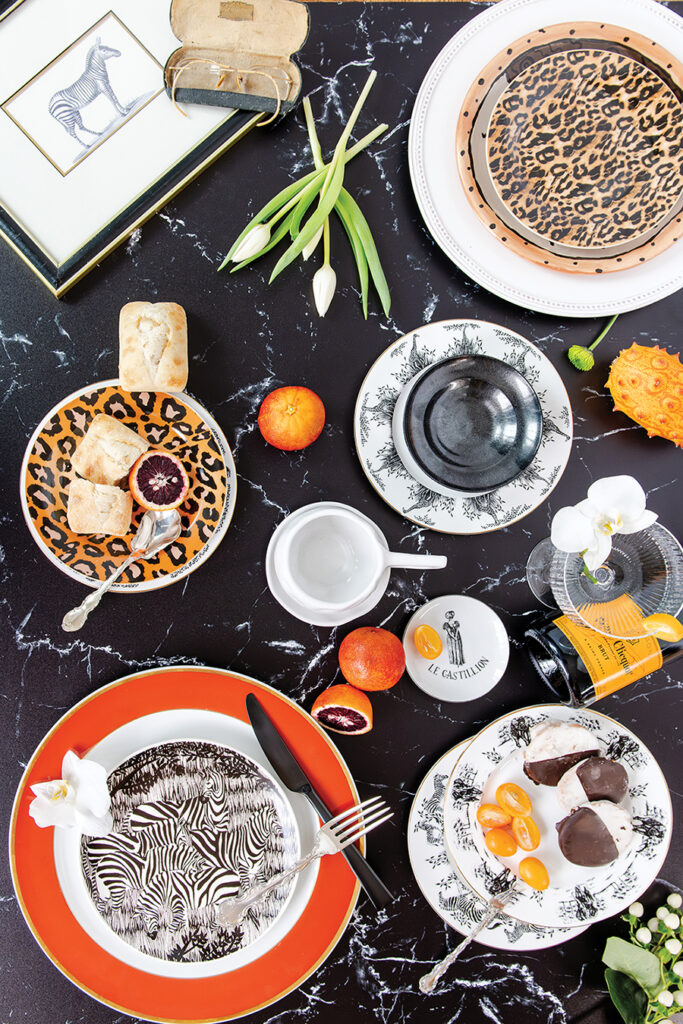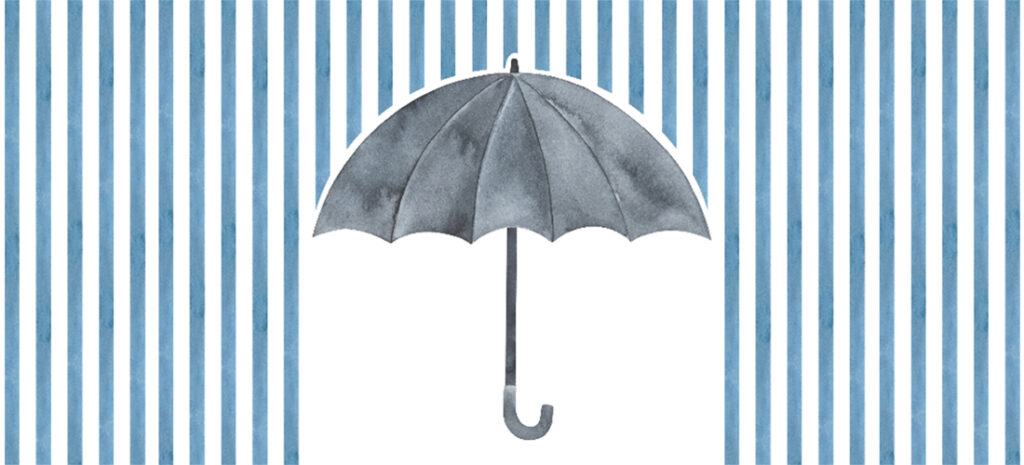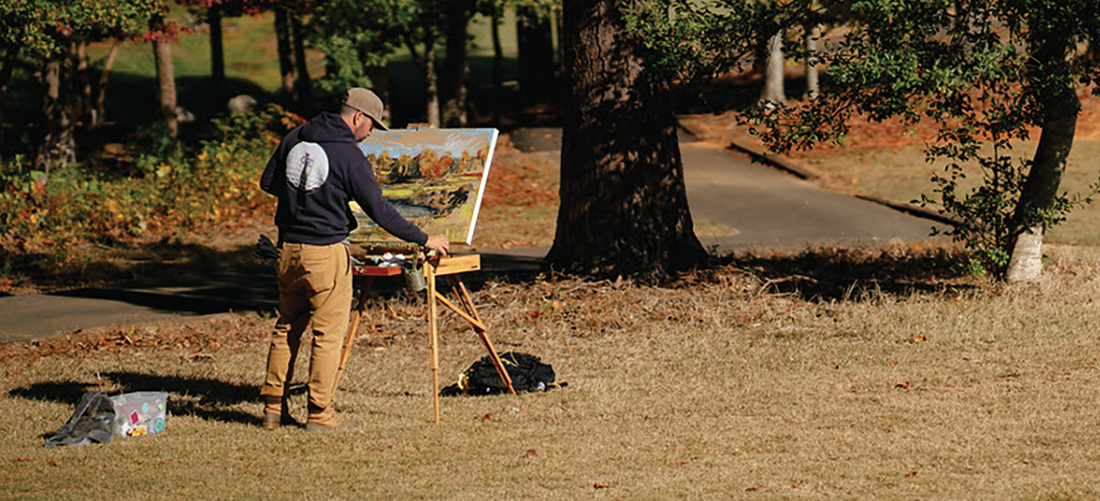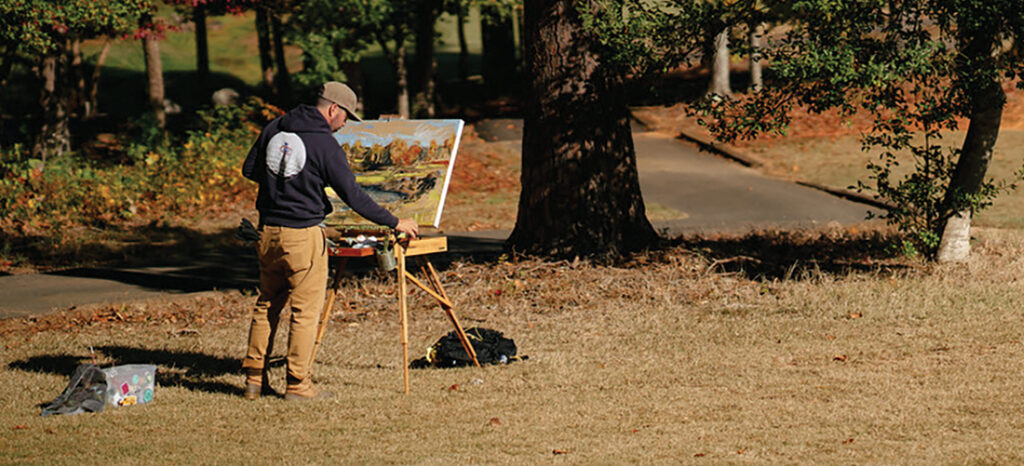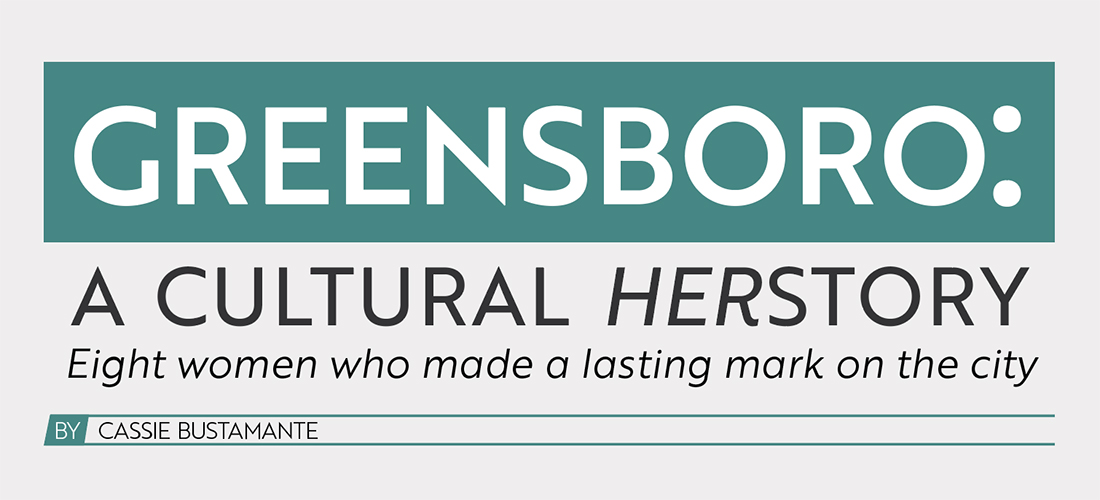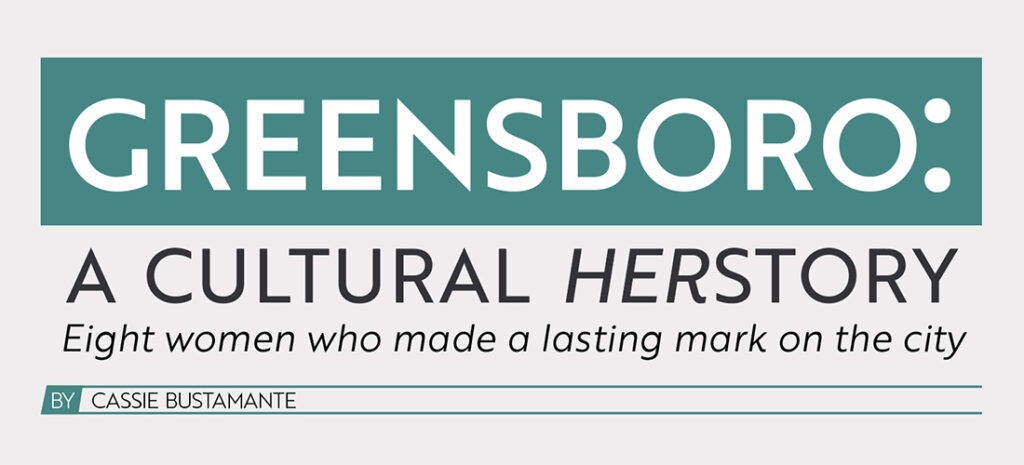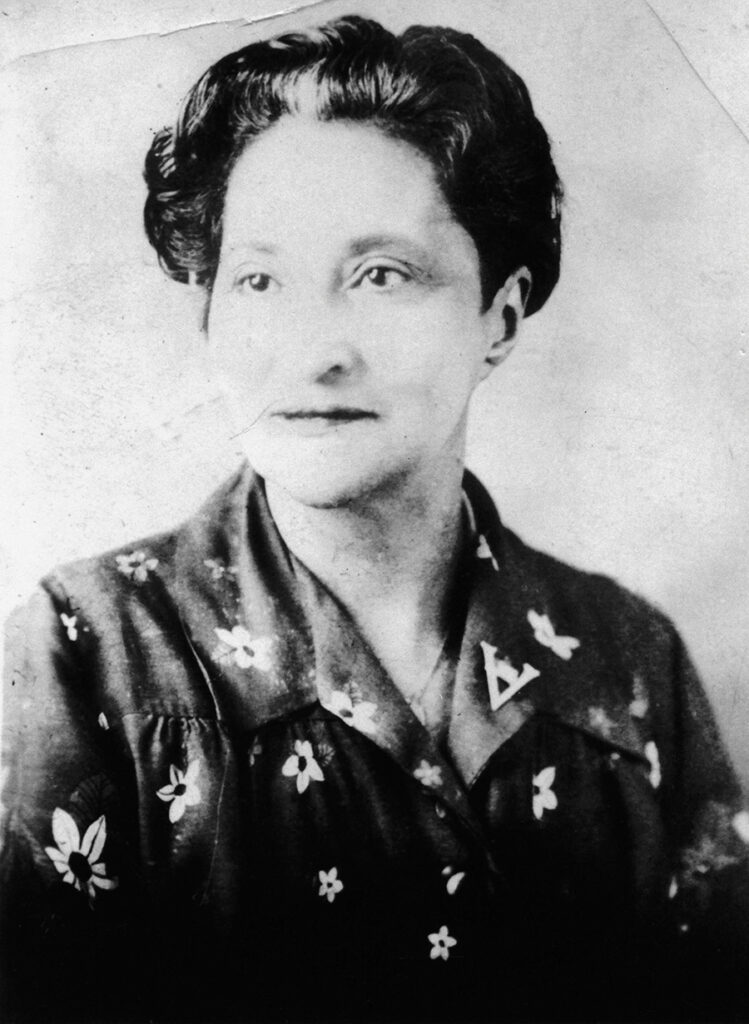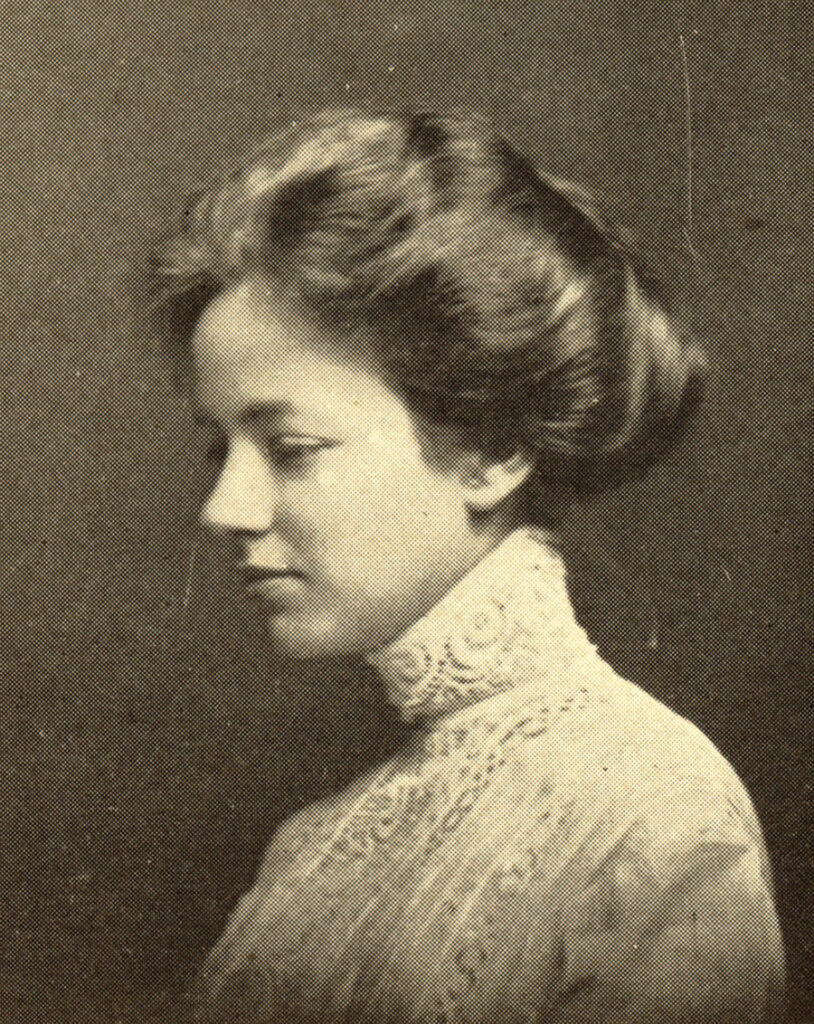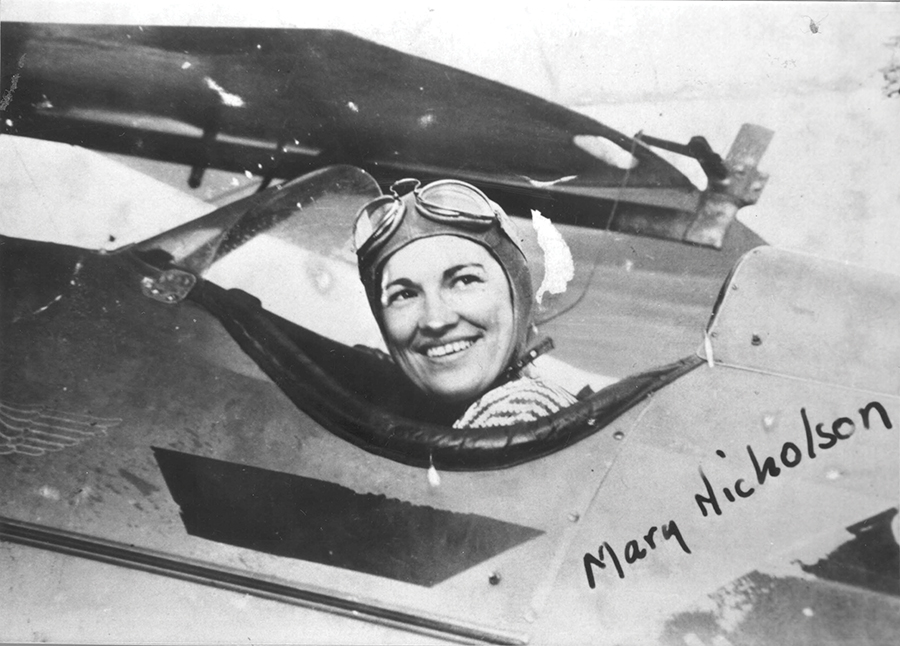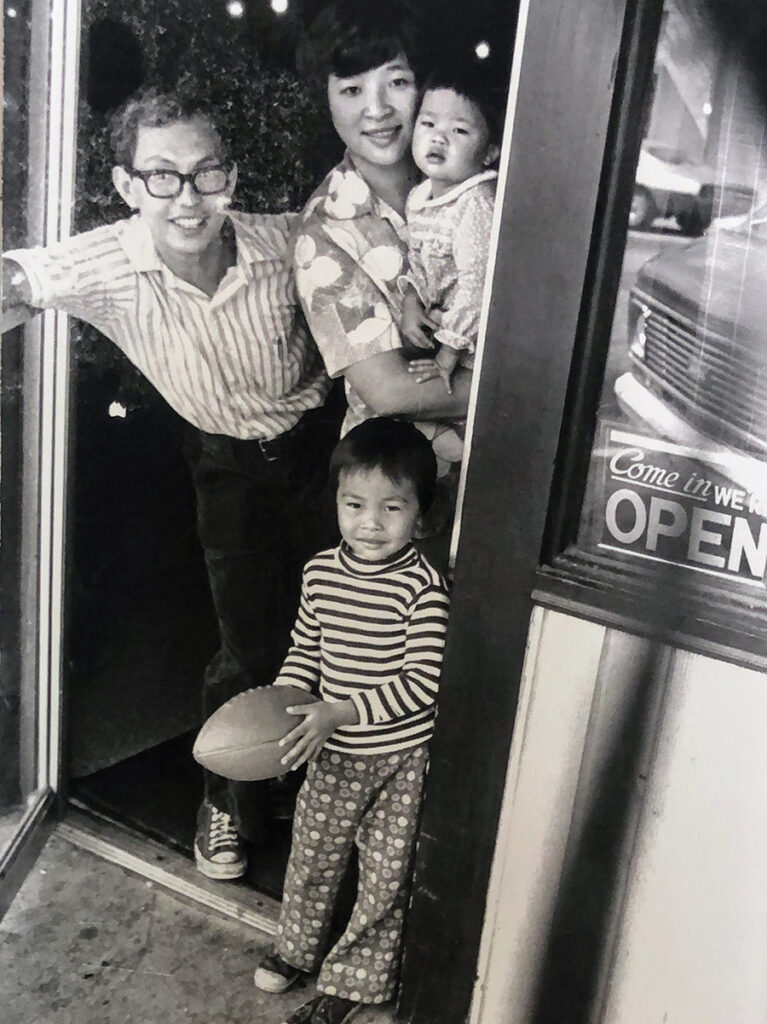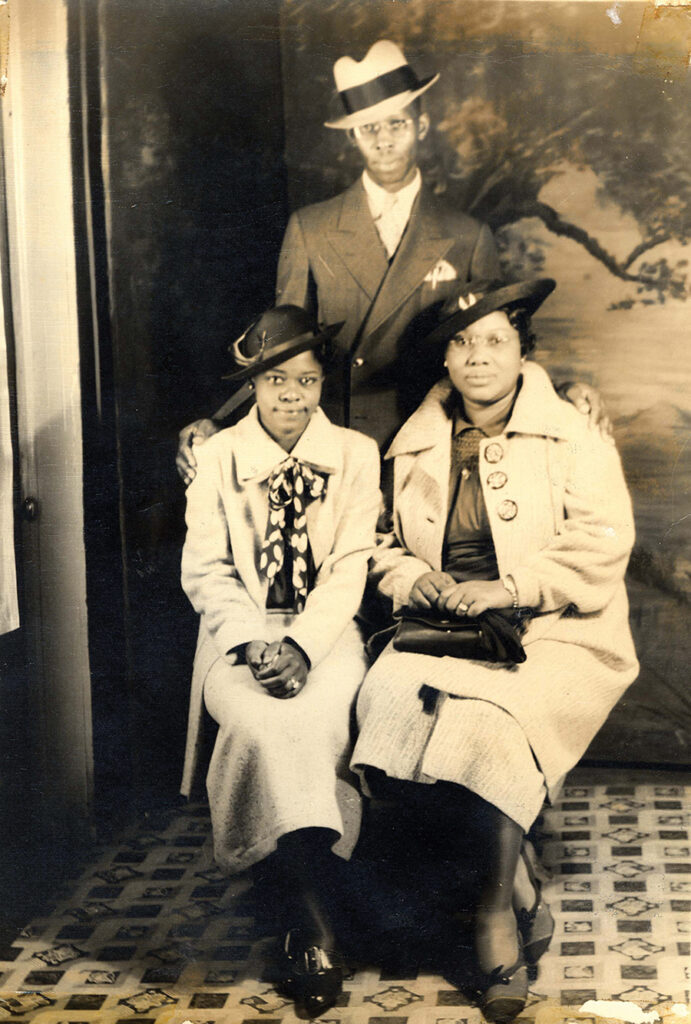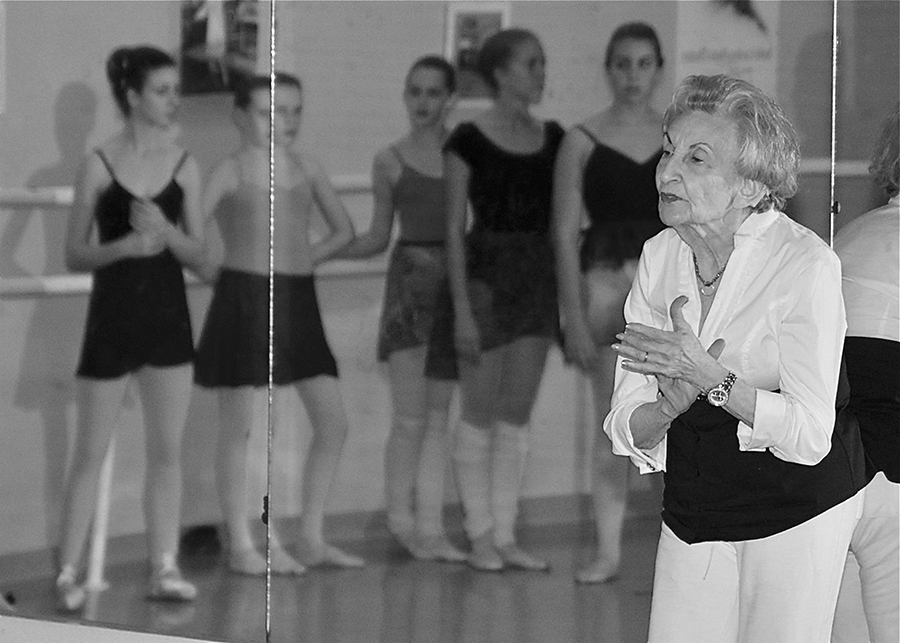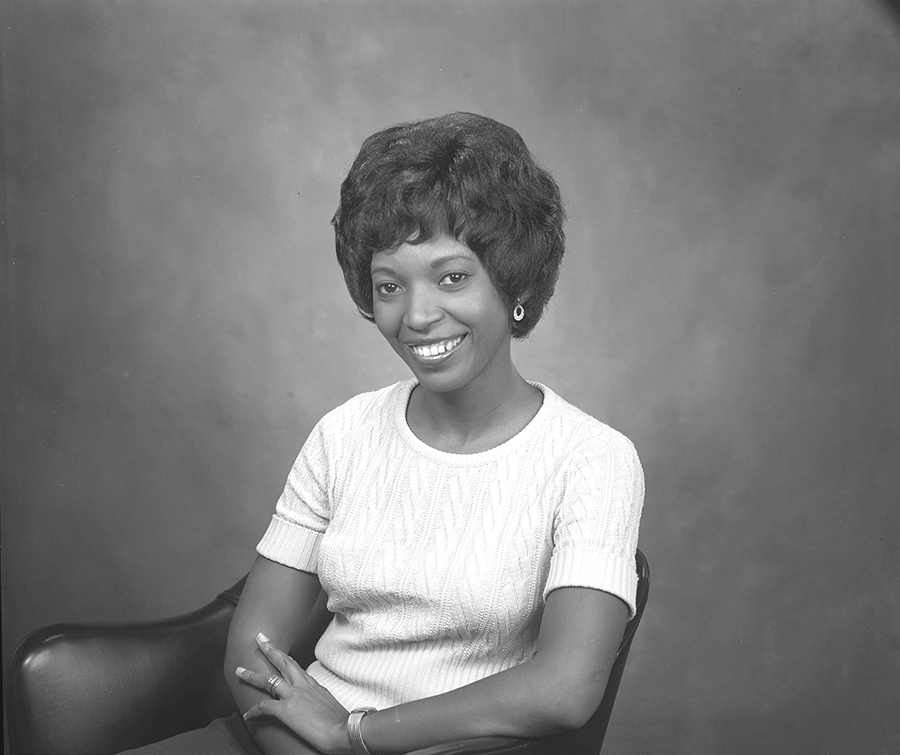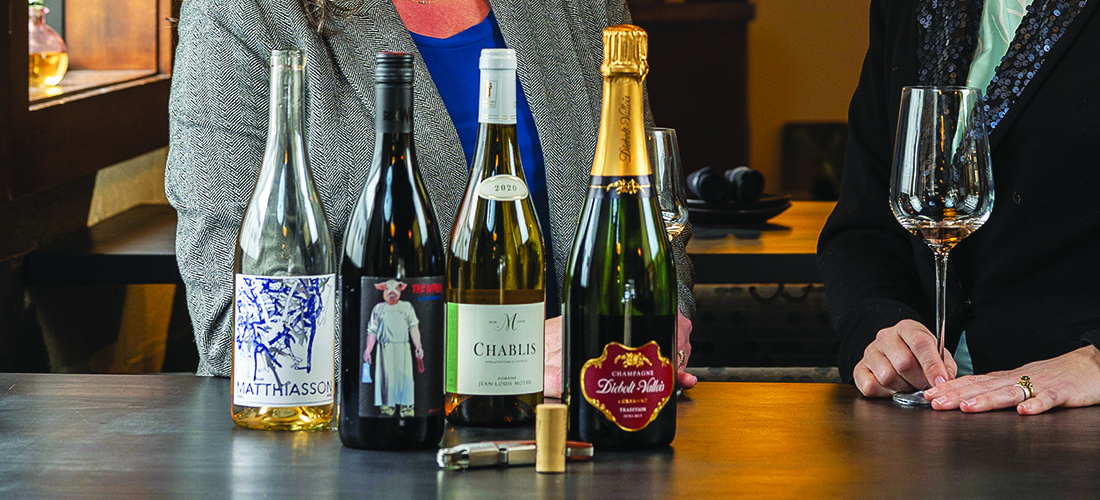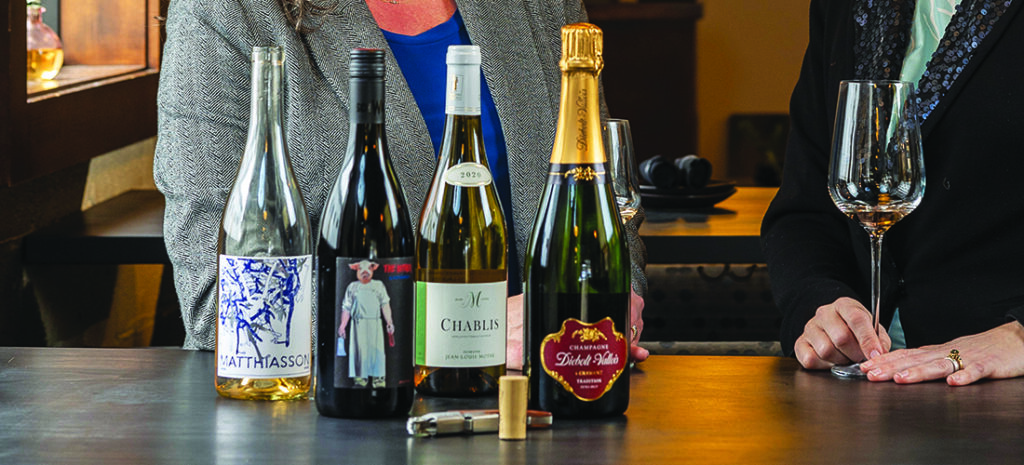All in the Family
All in the Family

A 1970s time capsule in New Irving Park
By Cassie Bustamante
Photographs by Amy Freeman
“It was like a little time capsule,” Alejandra Thompson de Jordan says, recalling the first moment she and husband Andrew Jordan stepped foot in what would become their home. While many big-city dwellers looking to relocate to a quieter, idyllic location would see a mountain of renovation work to be done, these former Manhattanites saw a home with history worth saving.
Nestled on a rare 2-acre lot in New Irving Park, the “Worsham House” amenities and decor are reminiscent of what you might see on television’s Mad Men. Tan grasscloth wallpaper, an intercom system, a tangerine-colored, midcentury freestanding fireplace, and even a built-in-the-wall turntable are just a few of the intact relics that remain 50 years after its construction. Originally drafted by architect G. Donald Dudley, the 1972 home was designed to be, according to its original plans, “a residence for Mr. & Mrs. Jack W. Worsham.” And it stayed as such until Jack, founder of several companies including Southern Plastics Engineering Company, passed away in 2019 at the age of 93, 11 years after his wife, Mary.
“It was his dream house,” says the Worshams’ only son, Len, who recalls moving to the house at the age of 15 after growing up in “a little tiny house” on Newlyn. Not only was it his father’s dream, but it was his design. “Don [Dudley] drew up the actual architectural plans, but it was dad’s brainchild.”
With four children (Len and his three sisters), Jack seemingly designed the home with entertaining in mind. “Mom was a great cook,” Len recalls of his mother, who was known for her coconut custard pie.
When Jack and Mary first bought the property and were in the process of building, one small building existed: “the little house” as the Worsham kids came to call it, as compared to the one Jack designed, “the big house.” Before their new, approximately 6,000-square-foot house was complete, Jack and Mary often entertained on the property. It “was a party house before the main house was ever built,” says Len.
The Worshams even started what became a yearly tradition until about the time of Jack’s death — a neighborhood block party. And while they were often surrounded by friends and family, what Len and his siblings remember as one of their fondest memories of their parents is, in contrast, a quiet moment from their twilight years. “As they got older, in their 70s and 80s, they just loved to sit on that back patio and listen to the birds chirping and watching the sunset.”
With Jack and Mary now gone, the vacant home, listed by the Worshams’ children, sought a new family, one that would breathe life into it as the Worshams once had. While Alejandra and Andrew were “not even flirting with the idea of living in Greensboro,” her older brother, Clifford, co-founder and president of Thompson (formerly Thompson Traders, a local company that creates artisan-made metal sinks and fixtures imported from Mexico), had another notion. He would often send her house listing links. His hope? That she’d leave her role as Chanel’s director of marketing for a job as vice president of sales and marketing with his company. And Andrew is no stranger to moving. Born in Colombia, he relocated often — living in Argentina, Atlanta, Brazil and even Hong Kong — throughout his young life due to his father’s executive position at Coca-Cola. Plus, on sabbatical from his role as Compass real estate’s general manager of agent growth, he could live anywhere.
The seed was planted. Then in March 2020, the world shut down due to COVID, and Andrew, a very pregnant Alejandra and their then 2-year-old daughter, Ale, left their 1,300-square-foot Manhattan apartment temporarily to stay with her parents at the Sedgefield house she grew up in. Clifford, meanwhile, stayed hot on his pursuit, but, Alejandra says, their home was in New York.
When Clifford sent her the listing for the Worsham house, however, she and Andrew contacted the Zillow agent and booked a tour — “for fun.”
The property itself wowed them. “After living in a box in Manhattan, we were like, what is this? Farmland?” Alejandra says with a laugh. Indeed, according to Len, the property was originally named “Worsham Farm” and the family once had ponies, cows and chickens.
In New York, Alejandra and Andrew were thrilled to have a single tree they lovingly named Greta outside of a window of their fourth floor apartment. “Here we can’t even count the trees, let alone name them!”
For Alejandra, it was love at first sight. Meanwhile Andrew loved the main floor, but felt the basement level was strange. “Maybe if the downstairs didn’t exist, it would be great,” Alejandra recalls him saying. Her answer? A playful “Just don’t go down there, problem solved!”
Even though Alejandra was head-over-heels and Andrew could picture himself living in this house, the couple were not ready to commit to the idea of leaving New York. But after the baby of the family, Rafa, was born in September 2020, they realized they were here to stay, close to her family and closer to his parents, who are retired and living in Atlanta.
In February 2021, just after leaving Chanel, Alejandra accepted the position with the family business and, at the same time, co-founded ESTAS, a beauty brand that focuses on scar care, something Alejandra knows about after undergoing C-sections. Everything was set in motion, but the Worsham house was under contract by then.
They put in an offer on another house — “a fine house for now.” And then, fate intervened. While visiting Andrew’s parents, they got word that the Worsham house was back on the market. “The stars aligned,” quips Alejandra. With the Greensboro real estate market on fire at the time, she and Andrew jumped.
Since moving in, the couple have worked to make the home theirs while preserving its heritage, even purchasing some of the existing furnishings with the sale of the house. Their New York belongings could fit in the living and dining room of their new home, Alejandra notes, so having some furniture in place was helpful.
“I love things with history. That means so much more to me than a brand-new, polished, pretty, perfect thing,” says Alejandra. “I want the story, so I think that’s probably part of the reason I fell in love with this house.”
While maintaining original characteristics was crucial, Alejandra and Andrew did make a couple of major changes. The carpeting on the main level was all pulled up and replaced with hardwood floors because of Alejandra’s allergies. Even the entry’s spiral staircase was carpeted, hiding usable wood underneath. “My dad, my glorious dad,” says Alejandra, “he sanded and stained all this wood and put it back on the stairs for us.”
Now, the staircase is a thing of beauty sitting just in front of a large entry wall that features original grasscloth paper. The rest of the entrance has been decorated to complement the home’s existing details. A cowhide rug rests on a warm toned parquet floor. Against an earthy gray stone wall, a gold-and-black mirror hangs above a sleek cabinet in the same colors. Large brass figures of the “Three Wise Monkeys,” a gift from Alejandra’s mom, represent “hear no evil, see no evil, speak no evil.” And the statement lighting? A gold-and-cut-glass sputnik chandelier the couple brought from their entry in New York.
The other staircase sits at the end of a long hallway and was also carpeted and walled in, with a single door at the top, making it feel like the entrance to a dark cave — “like the scary basements from Stranger Things.” To make it feel more welcoming, they removed the carpeting and opened up the wall, adding a railing and a new-to-them modern black-and-gold chandelier purchased at Red Collection.
In fact, walking around the house, Alejandra points out several pieces that are vintage and second hand, many purchased and many given to her. In the dining room, a pair of glass-doored cabinets house vintage tableware passed down from close family friend “Aunt” Sharon: vintage Lenox dishes that had been Sharon’s mother’s treasured wedding china and Gorham silver.
In the living room, two petite white sofas brought from New York face each other. A third sofa — a long, striped piece with 1970s-style lines — creates a conversation area centered on a stone fireplace. And, as it turns out, that one was scored for about $100 from Red Collection’s sale room. Alejandra had it reupholstered with inexpensive deadstock fabric. It’s flanked by two Asian style mother-of-pearl inlaid stools, also from Red Collection. And it all works seamlessly together, each couch featuring a mix of black, white and metallic-toned pillows.
Alejandra credits her “designers, with air quotes” — her mother, sister Samantha and Clifford’s wife, sister-in-law Martha — for helping her create a cohesive look that integrates the home’s inherent features. Martha, in particular, helped put together the living room.
While Alejandra sits on the board of GreenHill Center for NC Art and has quite the eye, she notes that “beauty is subjective.” And when it comes to art, she feels the same as she does about houses and furnishings. Echoing her earlier words, she says, “For me, it’s always the story.” She prefers to know the artist personally or to have learned something about the artist that pulls her into their narrative. Much of the art around the house, such as a vibrant Linda Spitsen painting and pieces created by sculptor Marta Tornero (whom she calls “Tia” Marta) has been made by family and friends.
In the family room, Alejandra points out a large gold-leaf and painted plywood piece over the fireplace. It was a gift from Martha, who, as it turns out, is an artist. Although she created it with their New York apartment in mind, it appears as if it were made for this home.
The wall of bookcases features several smaller pieces of art, including another Martha original. Looking at a large, colorful framed painting, she says it was a wedding gift from her “Aunt” Ingrid Cassuto, an “art aficionado” who once sat on the Weatherspoon’s board. The wall also features special pieces that Martha has brought back from Mexico, a nod to Alejandra’s heritage. Her mother, Alejandra Thompson, founder and creative director of Thompson, was born and raised in Mexico, just 10 miles from where the Purépecha artisans work in copper and metals.
The bookcase cabinets have a unique feature that is likely thanks to Jack Worsham’s trade. “These are plastic doors and they look like wood,” says Alejandra, pointing out the same is true for the home’s bathroom cabinets. Alejandra wonders, did they come from Southern Plastics?
“We’re not sure,” says Len, adding, “It was within his capabilities with the equipment he had.”
With its natural grasscloth paper, warm woods and collection of textiles in oranges and reds, the room has an organic, collected and global feel. Alejandra says she was never before keen on this color scheme. Their old apartment featured a lot of white and gold. But, she says, “This house has made me an orange lover.”
And she’s not the only one. In the main bedroom’s closet, Andrew’s traditional button-down shirts hang side by side, with a small section dedicated to funkier vintage patterns and bolder colors inspired by the home. Prior to living here, Andrew “would never wear anything that wasn’t navy blue.” But now? “The house has changed him,” says his wife. And while it took him a little longer to get there, he’s absolutely fallen in love with the house, too.
This house, it turns out, has become a labor of love for Andrew. “It’s his third child,” Alejandra says. Did he have DIY skills before moving here? Nope, but he’s watched a lot of YouTube videos. Plus, she adds, “He’s smart, likes learning and figuring things out.” In fact, the barn that once housed the Worshams’ ponies has become Andrew’s mancave. “It’s covered in tools. It’s his happy place!”
Downstairs in the finished basement the theme of entertainment flows. “If these walls could talk,” muses Alejandra. She imagines the Worshams were “the ultimate host and hostess.” And these basement walls do tell a story.
On one side, there’s a huge recreational space, complete with green turf, putting holes for practice and, tucked into the corner, a tiki bar. While the golf theme was original, Len notes that the tiki bar was added much later, in the early 2000s, he believes.
At the same time, a very large — Alejandra approximates 40-foot — hand-painted tropical ocean-scape mural was added to the wall opposite the tiki bar. And the artist, Greensboro’s Barbara Richardson, added clever, personal details. A sailboat at sea features the name “Worsham,” and on the far end a painted tiki bar mimics their own.
The other end of the basement steps back in time and welcomes guests to a 1970s lounge area. “The Butterfly Bar,” as Alejandra calls it. Why? Because of its original black, orange and gold butterfly wallpaper. Most of the furniture came with the house — the orange, black and white swivel bar stools, the lounge-style curved gray-and-black sofa, piped in, wait for it, orange. There’s one exception, though: In front of the sofa sits a gold-and-black glass circular coffee table made by Thompson, of course. “Everyone in my family has one.”
On the wall behind the, you guessed it, 1970s burnt-orange formica bar, there’s a handy feature not seen so much these days: A dumbwaiter leads up to the kitchen, where original wooden cabinets create an “L” around a tiered original island. A table-height counter was once surrounded by barrel chairs, but Alejandra prefers to keep it open and use it for serving.
Instead, Alejandra’s added a hand-me-down blonde midcentury set, passed down from her father’s parents. “It was in complete disrepair.” She adds proudly, “My husband brought it back to life.”
For now, most projects are maintenance since the couple admires the designs of the home’s original owners. However, Alejandra has a project in mind to bring in a little of her own family’s history. Standing inside the guest bathroom, she says, “Let me show you what my dream for the bathroom is.” She holds up a unique brass sink, featuring a metalwork lizard, made by Thompson. “I want to change this countertop and I want to put this sink in there.”
There’s one project the couple happily passed along to Andrew’s parents. That “little house,” as the Worsham kids called it? It needed a lot of love to once again be a usable space. “You know the big car bows?” asks Alejandra. She put one of those on the front door and they gifted it to Andrew’s parents, who are thrilled to have a space of their own when they visit their now-closer family.
“When Andrew was little,” says Alejandra, “he told his dad that when he grew up, he was going to build a treehouse next to his house and that his dad could live there as an old man.” Now, it looks like that childhood dream has come true. With carte blanche, Andrew’s parents turned the guest house into a more modern and cozy place where they can stay for days at a time without ever feeling like they’ve overstayed.
And, as an added bonus, Alejandra says, she and Andrew will sometimes get a sitter and go hang out in the guest house to relax with an “at-home” date night. While the “big house” was made to host loads of people, it’s nice to have a literal backyard getaway that offers serenity, with a nice buffer of trees between the two.
Just as the Worshams once did, Alejandra and Andrew entertain often. Her parents, her siblings and their children frequently come over. “Our house is the family country club,” quips Alejandra. And in the summers, the backyard is full of life, its pool full of kids. “It’s the best — my family are my favorite people,” says Alejandra.
A year-and-a-half after purchasing the home, Alejandra and Andrew invited the Worsham children over for a celebration that included Alejandra’s extended family as well. Len recalls the joy he and his siblings felt in seeing a new family in the home their parents dreamed up and built. “We saw that they loved the architecture, were interested in the history of it, and they had small children. And her brother lived around the corner,” he says. “We just knew.”
Knew what? That they were the right family for their parents’ house. “Jackie, she had tears in her eyes,” recalls Alejandra, her own eyes watering, “and she said, ‘I think Papa picked you guys for this house.’”
“That’s possible,” Len pauses and laughs. “Yeah, that’s really possible.” OH





